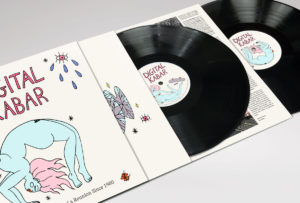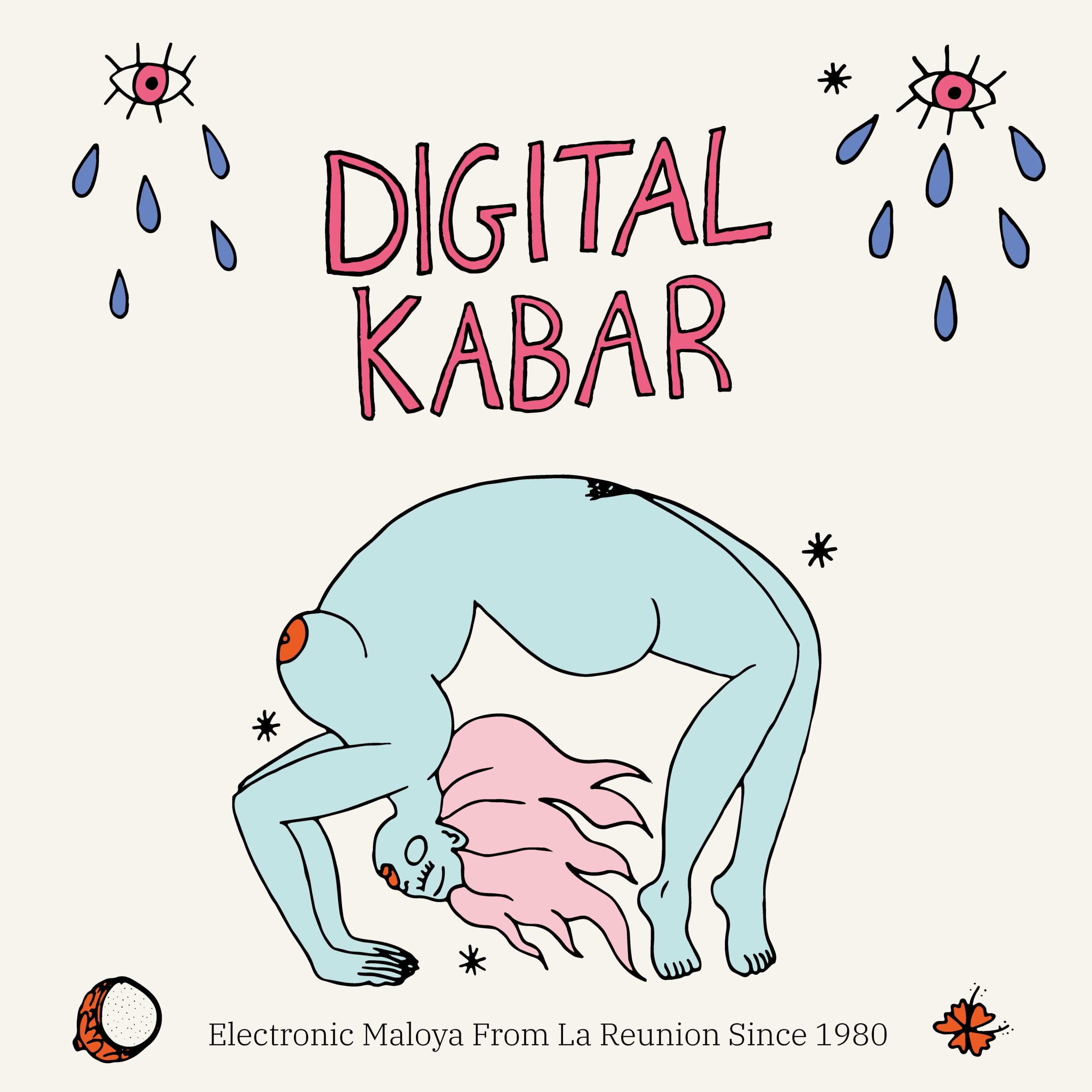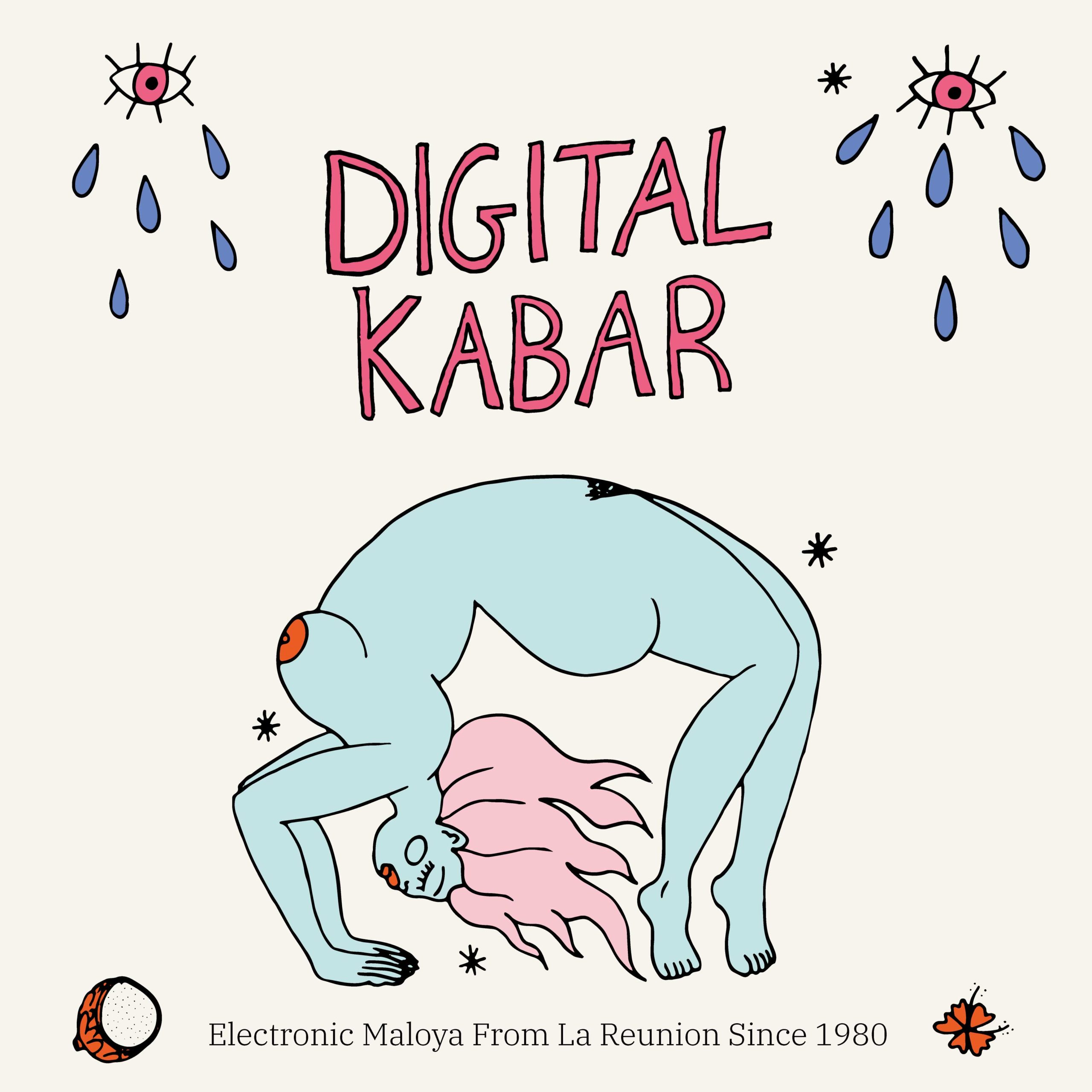Digital Kabar
Electronic Maloya from La Reunion since 1980 (Various Artists)
Formerly clandestine, today manifest, both sacred but also profane, sometimes meditated, very often improvised, the kabar transpires in the daily Reunion, getting rid with insolence of any label that dares to impose. The kabar is a fleeting but bubbling manifestation of an identity and a local culture that is still difficult to define. A moment of life and sharing where handcrafted instruments, neighborhood meetings, ritual dances and lyrical demands are mixed. A meeting.
Born from the musical union of maloya and electronic music, Digital Kabar is a compilation at the crossroads of cultures, porous to all sound experiences. It’s also the result of a friendship that drives InFiné at Les Electropicales festival, from the fascination of a small team dedicated to the independent musical cause for a musical scene and its diversity.
There is music everywhere on the Réunion, but the cultural background is dominated by Maloya. Who knew that an entire genre of music, with its rhythms and instruments, was actually banned there by the French Re- public through the 20th century? It’s not like the
genre was in any way incendiary or violence-inciting. Rather, it is a fully-formed style of music, with its instru- ments, rhythms and words. And with it, a whole swathe of culture was denied and rejected between the early 1960s and 1981.
Maloya has been built up over centuries in the sugar plantations of the Island (which had been populated only three centuries earlier), agglomerating popular sounds brought along by slaves from Madagascar, India and Mozambique. It was the music of the poor, especially black people, infused with mystical beliefs invoked during entire nights dedicated to its endless trance-inducing rhythms, being a darker style in comparison with the more joyous Séga. A very simple language organized mainly around a chant recited as a chorus, a massive drum (the roulèr) and the kayamb – a shaken idiophonic percussive instrument made from materials found in the sugar cane fields.
In the early 1960s, in response to growing unrest in Algeria, the French government issued a decree aimed at removing openly pro-independence civil servants from the colonies. The ensuing ban on Maloya was an overtly politically-motivated censoring of a workers’ culture that had become the standard-bearer of the Réunion’s Young Communist Party. The Creole texts of Firmin and René Viry, or the Gaston Hoarau Troupe, were then the most powerful of the political leaflets available on the Island. Maloya has been strengthened and moderni- zed in diversity and secrecy. It is neither a music of the older generations, or a genre that is frozen in time, but rather a fundamental pride for the Creoles, and a fascinating energy that mixes with many other genres, from rap to chanson, reggae, and ultimately electronic music.
It is the music of trance, music for self-abandonment and dance. The meeting of kayamb and machine see- med natural in light of the common spirit shared by Maloya and the techno-house tribes. One fundamental difference, however, is that Maloya is set to a ternary rhythm, which makes its marriage with most club-based music (which usually advocates for the binary) particularly difficult to make coalesce within the same composi- tion.
In 1985, it is Ti Fock, the inventive but controversial godfather of a Maloya revival who timidly marries international pop and clears the idea of an electronic rub with his first album, “Mafate”.
In the 90s, the Réunionnais musical landscape welcomed newcomers who changed everything: ravers, tired of playing the cat and mouse game with police in the muddy fields of Metropolitan France, came looking for the Promised Land to lay their soundsystems. They brought their gear with them, but also a culture of hypnotic electronic genres that found the Maloya as one finds a long-lost blood brother.
One standout is L’abuse, who sometimes incorporates local elements into his long, deliberately minimalist techno sets. Zong is also one of such descendants of this migration, whose heavy dub influence shines through. On 303 Militan, Psychorigid brings an offbeat tropical minimalism perched between acid house and the wobbling of an electronic kayamb. On Angel Choirs, Kwalud combines the warmth of Maloya with the fog- giness of London dubstep, while J-Zeus’ Koloni seems to be cut out for early-morning after-parties.
For his part, Jako Maron has long preferred hip-hop to the music of his Island, notably among the Indigenous Force collective. But to think about the Réunion’s social predicaments inevitably brings us back to the music through which they are best expressed. With Barbaté Maloya, or in a previously-unreleased remix of a track by singer Patrick Manent, the artist works towards perfecting a fusion that has become his obsessive quest.
Labelle, with his first album Ensemble and other InFiné projects, draws fascinating sound portraits from the Réunion – from the mountains to the shore, from the humid West to the wild South – hinting at the deep breath of the volcano that is also the soul of the Island. With Black Maloya, he provides a definition of “post-Maloya”, providing a star map of Réunionnais electronic music in the year 2019.
Over a few decades of hesitant trial and error, followed by a sudden growth spurt, the style has grown a new branch of Maloya that is bound to continue to sprout new buds. And this is what this compilation seeks to tells us. Let us see it as a step in the journey, rather than a destination.
→ Stream / Buy


FACE A
A1. Patrick Manent – Kabaré Atèr (Jako Maron Remix)
A2. Boogzbrown – Timbila
A3. Loya – Malbar Dance
A4. Jako Maron – Batbaté Maloya
FACE B
B1. Sheitan Brothers – Gardien Volcan
B2. Ti Fock – Kom Lé Long (Do Moon’s Edit)
B3. Boogzbrown & Cubenx – Butcha
B4. Force Indigène & Jako Maron – Mazigador
FACE C
C1. Agnesca – Bilimbi
C2. Zong – Mahavel (South Africa Dub Studio)
C3. Labelle – Block Maloya_
C4. Psychorigid – 303 Militan
FACE D
D1. Salem Tradition – Kabaré (Alma Negra Rework)
D2. J-ZeuS – Koloni
D3. Kwalud – Angel Choirs

